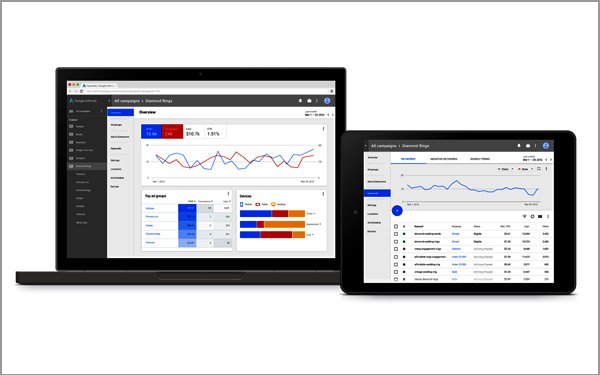Google announced Monday that it will redesign the AdWords interface to support changes in consumer search behavior and the shift to mobile screens. It's the first major redesign since launching the
platform more than 15 years ago.
The redesign will refocus on the advertiser's business and less about Google's product, AdWords, per Jerry Dischler, VP of product management for Google
AdWords, in a post.
Features will support the movement of searches to mobile from desktop, meaning shorter and fewer searches per session. The changes aim to allow advertisers to find better
ways to execute and optimize campaigns based on unique marketing objectives, and improving custom ways advertisers think about their business, from goals to measurement and management of ads.
Part of that means simplifying navigation and making specific data readily available, though Google doesn't detail the types of additional data, other than putting a focus on shorter, more frequent
mobile searches.
One thing is certain, the focus turns toward less clutter, a more intuitive workflow, and ability to complete tasks, like managing ad extensions and building reports, in less
time from one place.
The Google-supplied screenshot shows that clicking on an individual campaign brings up a dashboard view that Google calls the Overview screen, a narrow focus of
an account. It not only shows Ad Groups, but performance by devices. The platform seems to only show the advertiser information pertinent to the types of campaign it will run. For example, the
AdWords interface will show sitelinks, but not video depending on the types of campaigns the advertiser runs.
While it appears that Google will make more data readily available, the company
doesn't detail the types of additional data other than providing an example of a screen shot that provides hints.
The biggest impact of the change focuses on the Material Design, the design language at the core Google apps such as Maps, Search, and Gmail.
Why redesign
the interface other than provide simplicity to advertisers using the platform? Advertisers will need to view and have access to specific data as they adapt to mobile search advertising. Dischler hints
at how predictable Web sessions have been replaced by numerous short bursts of different types of digital activity throughout the day, especially on mobile devices. In addition to searches, swiping a
Google Now Card to read an article, entering information about an appointment into the phone's calendar, and distances and locations a phone records as it travels with its owner throughout the day
likely factors into the data advertisers will see to determine the types of advertisements served on the phone.
